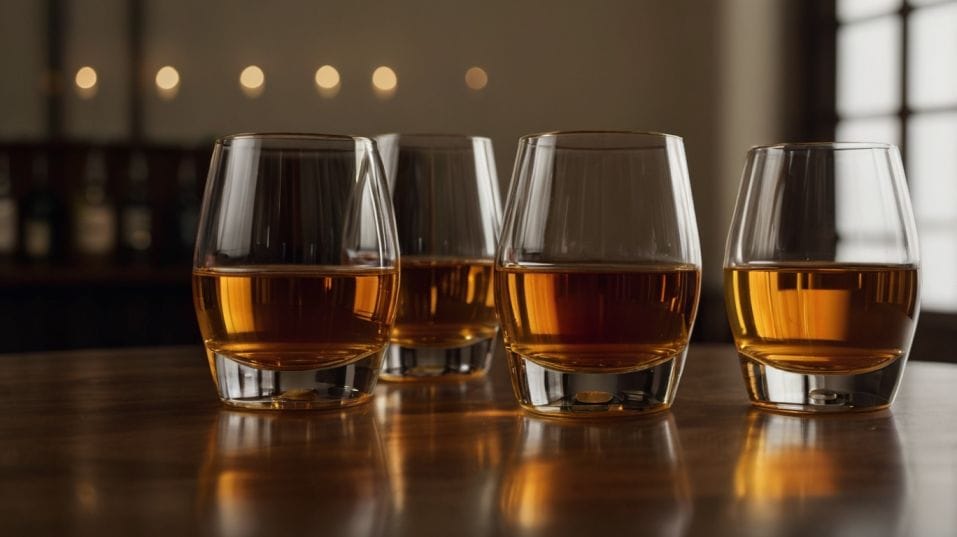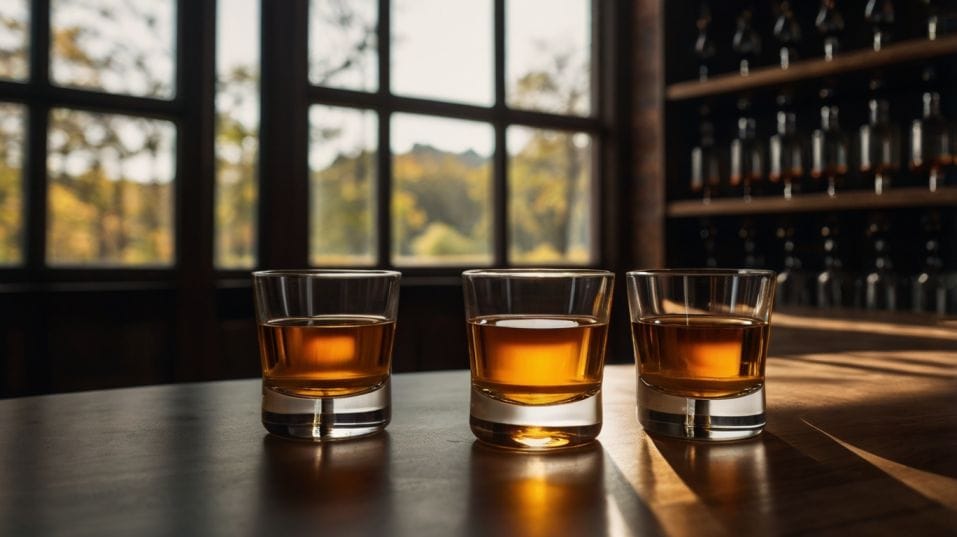Tasting Flights: How to Compare 3 Whiskeys the Right Way
Learn how to taste whiskey like a pro. Build smarter flights, sharpen your palate, and discover what you truly enjoy—sip by sip.

Ever wonder why one whiskey thrills you and another falls flat? The answer isn’t hype—it’s contrast. A well-built tasting flight can teach your palate more than months of casual sipping.
Whether you’re new to whiskey or refining your collection, side-by-side comparison reveals how flavor, texture, and finish shift across styles.
This isn’t about impressing friends—it’s about unlocking insight. Here’s how to taste three whiskeys with purpose, clarity, and a sharper sense of what you really enjoy.
Build the Right Lineup
Most beginners get this part wrong. They reach for three bottles they already know and like. Same style, similar proof, maybe even the same distillery.
That’s not a flight—it’s an echo chamber. You want difference. Deliberate contrast. Think of it like this: each whiskey is a lens. Together, they sharpen the image.
Start with a broad category: bourbon, rye, Scotch, American single malt. Within that, aim for variation. A wheated bourbon vs. a high-rye.
A peated malt vs. an ex-sherry Speyside. A craft rye against a classic Kentucky bottling. You don’t need ultra-rare bottles—just different voices in the same conversation.
Keep proof in mind. Avoid stacking three cask-strength monsters unless your goal is heat. A 90-proof base, a 100-proof standard, and one barrel-strength pour will show you how alcohol level changes texture and perception.
And skip the branding bias. You’re not here to confirm a label’s reputation. You’re here to figure out why something tastes the way it does—and what that means to you.

Set the Stage
Before a drop hits the glass, set yourself up to actually taste. Kill the distractions. No food, no candle burning, no Spotify playlist shifting your mood. Just you, the whiskey, and a notebook if you want to go full analyst.
Use identical glassware. Glencairns or tulip-shaped glasses are ideal. If you’re stuck with rocks glasses, fine—just be consistent across all three.
Pour a half-ounce of each. Label your glasses A, B, and C—don't rely on memory. First mistake people make? Forgetting which glass was which after two sips.
Let them sit for five minutes. Whiskey opens up fast. Those first volatile notes need a chance to blow off. You’re not wasting time—you’re prepping your palate for the real show.
Smell with Purpose
Nosing is where most of the story begins. But don’t shove your nose into the glass and inhale like you’re testing cologne. Hold the rim just under your nose and take a few short sniffs. Then move away, breathe, and go back in.
Smell each glass more than once. Go through them in order, then back again in reverse. You're training your brain to notice shifts: more fruit here, more grain there.
One might hit with sweet vanilla, another with sharp oak, another with a strange herbal note you can’t name. Perfect.
The goal isn’t to build a grocery list of tasting notes. It’s to notice how they differ—and what those differences do to your perception. This builds the muscle memory that separates drinkers from tasters.
Taste Like It Matters
First sip: calibration. Don’t expect clarity. That initial taste just wakes up your mouth. Swirl, swallow, reset.
Second sip: now the details show up. Pay attention to the feel—is it oily, light, gritty? Does it spike hot and fade fast?
Linger slow and syrupy? The more you isolate texture, the more you understand how proof, barrel, and grain affect mouthfeel.
Then comes flavor. What hits first—fruit, spice, wood? Where does it go? Some pours start lush and sweet, then dry out mid-palate and leave a tannic finish.
Others roll straight through like velvet. You’ll start to feel the architecture: front, middle, end.
Now move to the next glass. And the next. Then back again. This isn’t a race. Each pass sharpens your perception.
You’ll begin to see how one pour flattens another, how one’s boldness suddenly makes the next feel thin, how a finish you thought was long is actually short when compared side by side.
Those revelations? They don’t come from one bottle in isolation. They only happen through comparison.
Add Water—If You Know Why
Water can be a tool, not a crutch. A few drops in a high-proof pour can break open the aroma and tame aggressive heat. But don’t assume more water means better flavor. You’re diluting alcohol and flavor compounds. Go slow.
Try nosing before and after. Does it bring out brighter fruit? Kill the spice? Does the mouthfeel collapse, or open up? Again, contrast is your teacher.
Take Control of Your Palate
The point of this whole exercise isn’t to find the “best” whiskey of the three. That misses the mark. The real value lies in understanding why something hits you right, and why something else doesn’t.
Maybe you realize you hate dry oak on the finish. Or that you’re drawn to soft, low-rye mash bills. Maybe sherry cask finishes suddenly feel cloying after a bright malt. These patterns shape your preferences—and your collection.
You’re no longer buying based on scores, hype, or shelf placement. You’re building a library of flavor, guided by direct experience.
Want to get deeper?
Write it down. Not to sound smart, but to track how your taste evolves. What surprised you? What felt flat? What bottle showed better against competition than it did on its own? This is how you collect smarter. Not for quantity—for clarity.
Final Thoughts
Tasting flights aren’t just about sipping whiskey. They’re about building fluency. About teaching your palate how to listen and respond. About seeing flavor not as a fixed note, but as a moving target that shifts depending on what stands beside it.
Set one up this weekend. Choose three bottles that push each other. Taste them side by side, with focus. Skip the noise. Skip the influencers. Build your own map, one sip at a time.
You’re not here to follow the crowd. You’re here to taste better, think sharper, and drink like someone who knows what they’re looking for. Start now.




